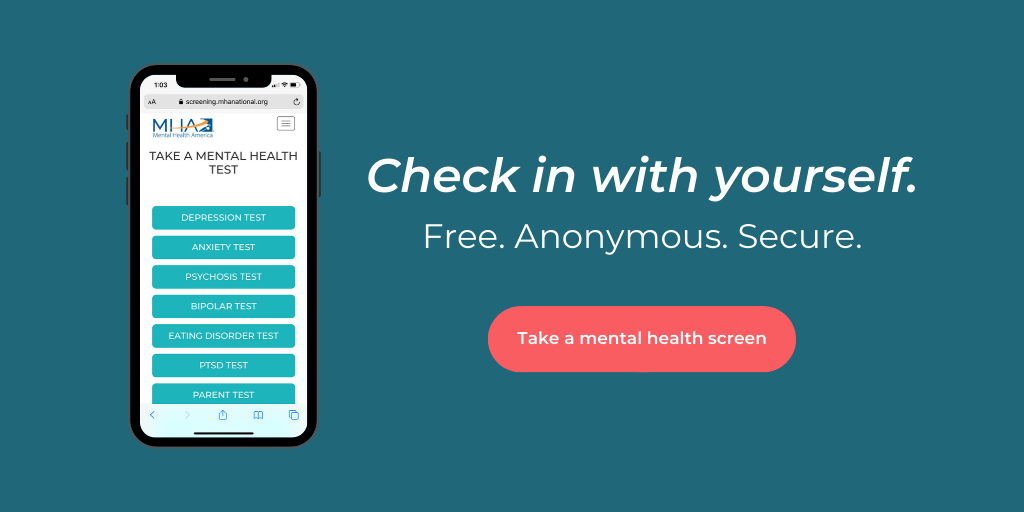Most people experience feelings of anxiety before an important event such as a big exam, business presentation or first date. Anxiety disorders, however, are illnesses that cause people to feel frightened, distressed and uneasy for no apparent reason. Left untreated, these disorders can dramatically reduce productivity and significantly diminish an individual's quality of life.
Anxiety disorders are among the most common mental illnesses in America [1]; over 21% of adults (42.5 million) are affected by these debilitating illnesses each year.
Stress is a normal, proportional reaction to a stressful situation or external pressures. It’s normal to feel stressed about a final exam or job interview. Anxiety in anxiety disorders is characterized by feelings of apprehension or unexplained thoughts of impending doom.
While most individuals will experience some form of anxiety in their lives, there is still research being done on the causes of anxiety disorders. New research shows that anxiety disorders run in families, and that they have a biological basis, much like allergies or diabetes and other disorders. Anxiety disorders may develop from a complex set of risk factors, including genetics, brain chemistry, personality, and life events.
For people who experience trauma, anxiety is a way that the brain and body has reacted to the traumatic experience – sometimes as a protective measure. When we’re feeling attacked it makes sense to be on guard and not trust others. For people who have been through trauma, those thoughts and protective behaviors continue even when danger is gone. Finding ways to feel safe, re-teach your body and mind to readjust to feelings of safety, and working through bad experiences can help.
Generalized Anxiety Disorder: Chronic, exaggerated worry about everyday routine life events and activities, lasting at least six months; almost always anticipating the worst even though there is little reason to expect it. Accompanied by physical symptoms, such as fatigue, trembling, muscle tension, headache, or nausea.
Obsessive-Compulsive Disorder: Repeated, intrusive and unwanted thoughts or rituals that seem impossible to control.
Panic Disorder: Characterized by panic attacks, sudden feelings of terror that strike repeatedly and without warning. Physical symptoms include chest pain, heart palpitations, shortness of breath, dizziness, abdominal discomfort, feelings of unreality, and fear of dying.
Phobia: Extreme, disabling and irrational fear of something that really poses little or no actual danger; the fear leads to avoidance of objects or situations and can cause people to limit their lives.
Post-Traumatic Stress Disorder: Persistent symptoms that occur after experiencing a traumatic event such as war, rape, child abuse, natural disasters, or being taken hostage. Nightmares, flashbacks, numbing of emotions, depression, and feeling angry, irritable, distracted and being easily startled are common.
Social Anxiety Disorder: Fear of social situations in which the person is exposed to unfamiliar people or to possible scrutiny by others. The individual fears that he or she will act in a way (or show anxiety symptoms) that will be embarrassing and humiliating, often times leading to avoidance of social situations and severe distress when participation in social situations can't be avoided.
- Feeling restless
- Feeling tired
- Difficulty concentrating or losing their train of thought
- Irritability
- Muscle pain, tightness, or soreness
- Difficulty sleeping – both falling asleep or staying asleep or being rested
If you have any of these symptoms and want to check if you are at risk of experiencing an anxiety disorder, take an Anxiety screen here.
Anxiety is about worry and fear. Worry and fear happens when something causes you to learn to be scared and worried. This learning process affects your thoughts and your body, for example by causing your heart to race or excessive sweating. You can treat anxiety by addressing the thoughts and physical reactions that are happening in your mind and body. For example, you can re-learn how to be around the thing that scares you and NOT react with fear, essentially retraining your thoughts and physical reactions.
Some examples of how to treat anxiety include:
Therapy: There are many different types of therapy. It can be a great way to change behaviors, gain confidence, learn new skills, and talk with someone openly and honestly. One of the most common and researched types of therapy for anxiety is Systematic Desensitization and Exposure Therapy. The main aspects of these types of treatment are slow exposure in uncomfortable situations, often in a safe environment with someone working with you to address the desire to run away. The goal is to do the thing you’re scared of and work on changing thoughts and behaviors.
Support groups: Support groups are made up of individuals with similar experiences, like anxiety, who meet regularly to discuss their experiences. There are many groups specific to anxiety, in addition to groups around broader issues. Talking to people who are going through the same things can make you feel less alone and more connected. It also creates a space where people can share what has worked for them and talk through their struggles with people who understand.
Medication: Another option is to take medications. Medications literally mellow you out and prevent your body from reacting in a fearful way. Anti-anxiety medications like Xanax or Klonopin are designed to work quickly to help calm you down by slowing down brain activity or communication between your body and brain. Unfortunately, these drugs can be very addictive. Another drug that can be used to treat anxiety are antidepressants.
Lifestyle Changes: Research shows exercise, meditation, and yoga can all improve mood and overall well being. Research also shows the importance of nutrition and certain supplements in supporting brain and mood. Other things like taking time to take care of yourself, trying activities you enjoy, and spending time with people or environments where you feel supported can help as well.
While there is no one simple answer, people do recover with a combination of supports. It can take some time to find out what works best for you, but it does get better.
Stories about anxiety on The Mighty.
Get additional information about Anxiety Disorders at Psych Central.
988 Suicide & Crisis Lifeline
988
988lifeline.org
Anxiety and Depression Association of America
240-485-1001
www.adaa.org
Freedom From Fear
718-351-1717
www.freedomfromfear.org/
National Institute of Mental Health
866-615-6464
www.nimh.nih.gov
National Association of Social Workers
www.socialworkers.org
Anxiety in Older Adults
Excessive anxiety that causes distress or interferes with daily activities is not a normal part of aging, and can lead to a variety of health problems and decreased functioning in everyday life.
Social Anxiety Disorder
Going to a party or even having a one-on-one conversation with a new person can result in increased heart rate, sweating, and racing thoughts for someone with social anxiety.
Managing Anxiety in the Classroom
Research shows that up to 25% of students struggle with clinical anxiety which can significantly impact a student’s ability to learn and perform up to their capacity.






